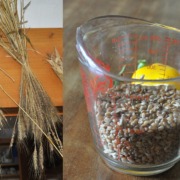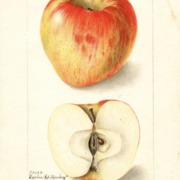BUSH RESCUE
/2 Comments/in Pruning/by Lee ReichLet the Plant Express Itself
“I brake for butchered plants.” Perhaps that’s what the bumper sticker on my car should read, because I did almost slam on my brakes last week to try and save a forsythia bush — a whole row of them, in fact — from being butchered. An obviously well-intentioned guy was attacking the bushes on his front lawn with loppers.
A few things were wrong with this scene. Read more
STUFFED
/2 Comments/in Fruit, Gardening, Vegetables/by Lee ReichGrow Your Own Stuffing
Thanksgiving is a time of year when one’s thoughts naturally turn to . . . stuffing. No, not stuffing yourself, but stuffing a turkey. Even many people who choose not to eat turkey on Thanksgiving nonetheless do enjoy stuffing themselves with stuffing.
So why not think about what ingredients for stuffing can be reaped from the garden? Even better, how about setting aside a little portion of the garden next year as a stuffing garden?
The bread and butter of any stuffing is some starchy food, often bread and butter itself, the bread usually as crumbs. There’s no breadcrumb plant, so forget about growing breadcrumbs. Not that you couldn’t buy some wheat “berries” at a health food store, plant them next spring, harvest the grain when the plants dry down, thresh and winnow out the berries, grind them into flour, make the flour into bread, then let the bread go stale and pound it into bread crumbs.

Growing breadcrumbs– I did it once!
ONE OF THE GREATEST APPLES
/5 Comments/in Fruit/by Lee ReichOl’ TJ was Spot On
Thomas Jefferson was right: Spitz is one of the greatest. Apples, that is. Esopus Spitzenberg, to use the variety’s full name, was the variety that T.J. preferred over all others from his Monticello orchard. And soon it will be coming into perfection here. Or, I should say “would be coming into perfection here.”

Watercolor from my book “Fruit: From the USDA Pomological Watercolor Collection“
That was years ago, when I grew Spitz.
This time of year, back then, the fruits would not be still hanging from the branches. Read more




